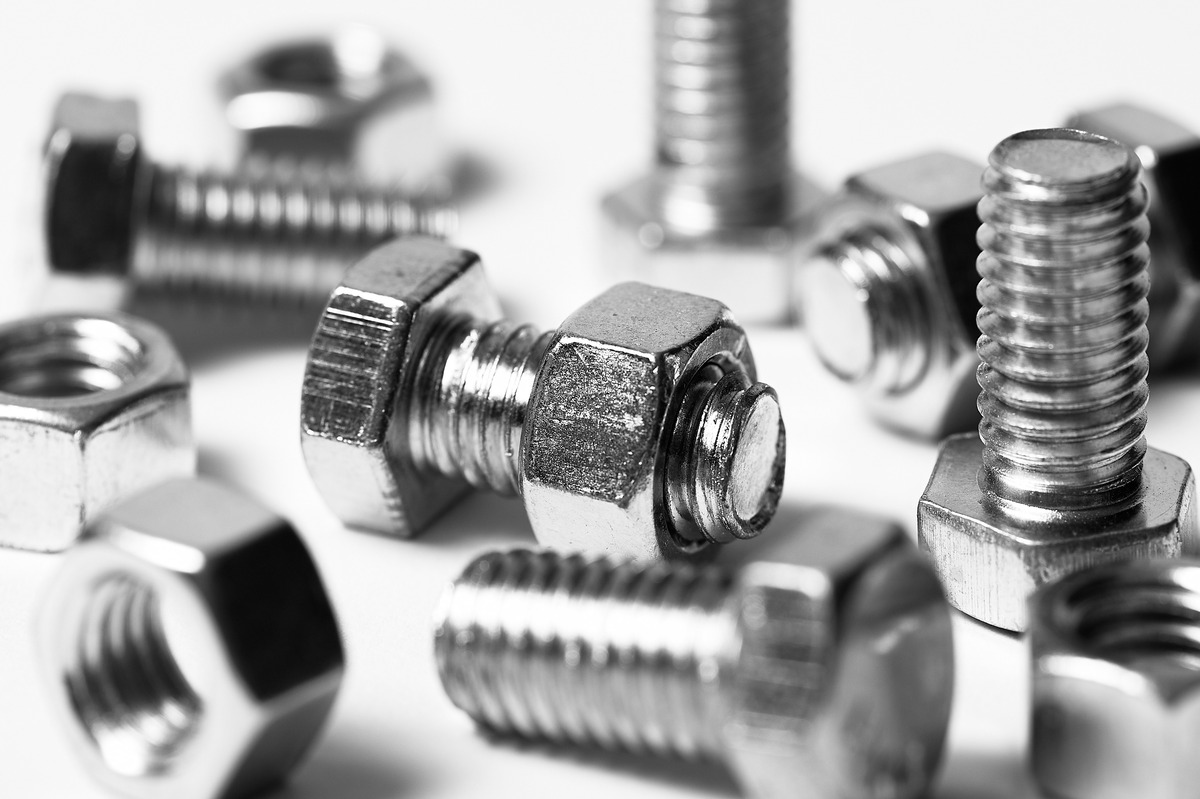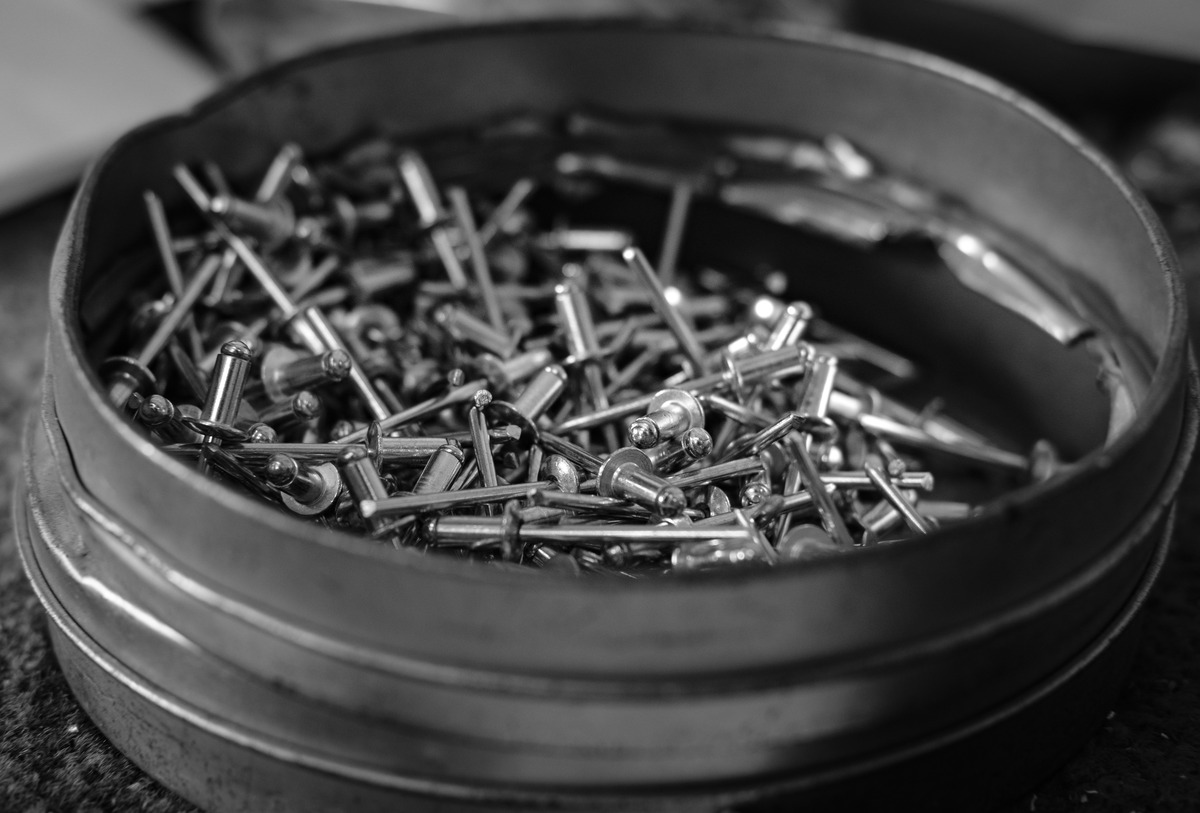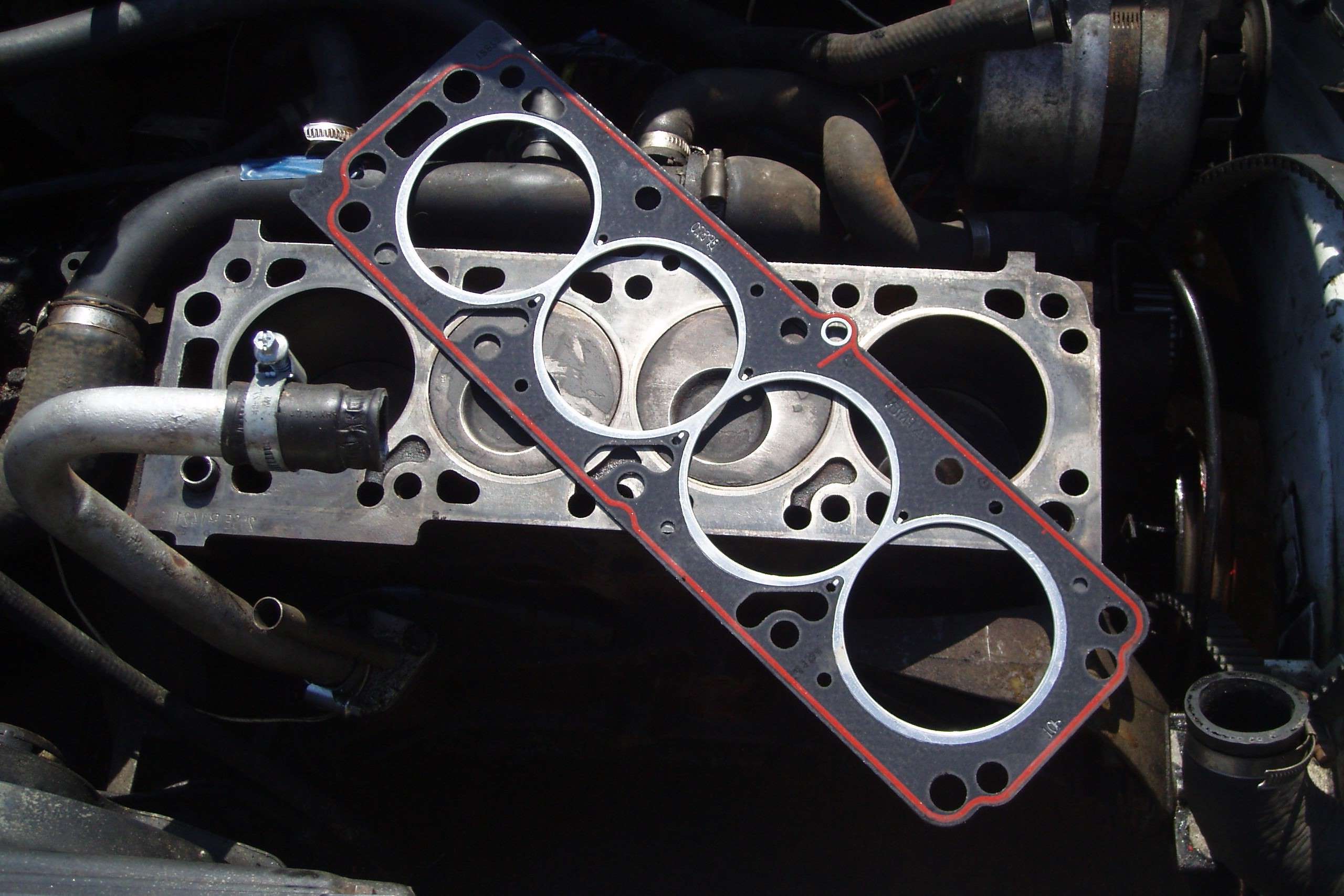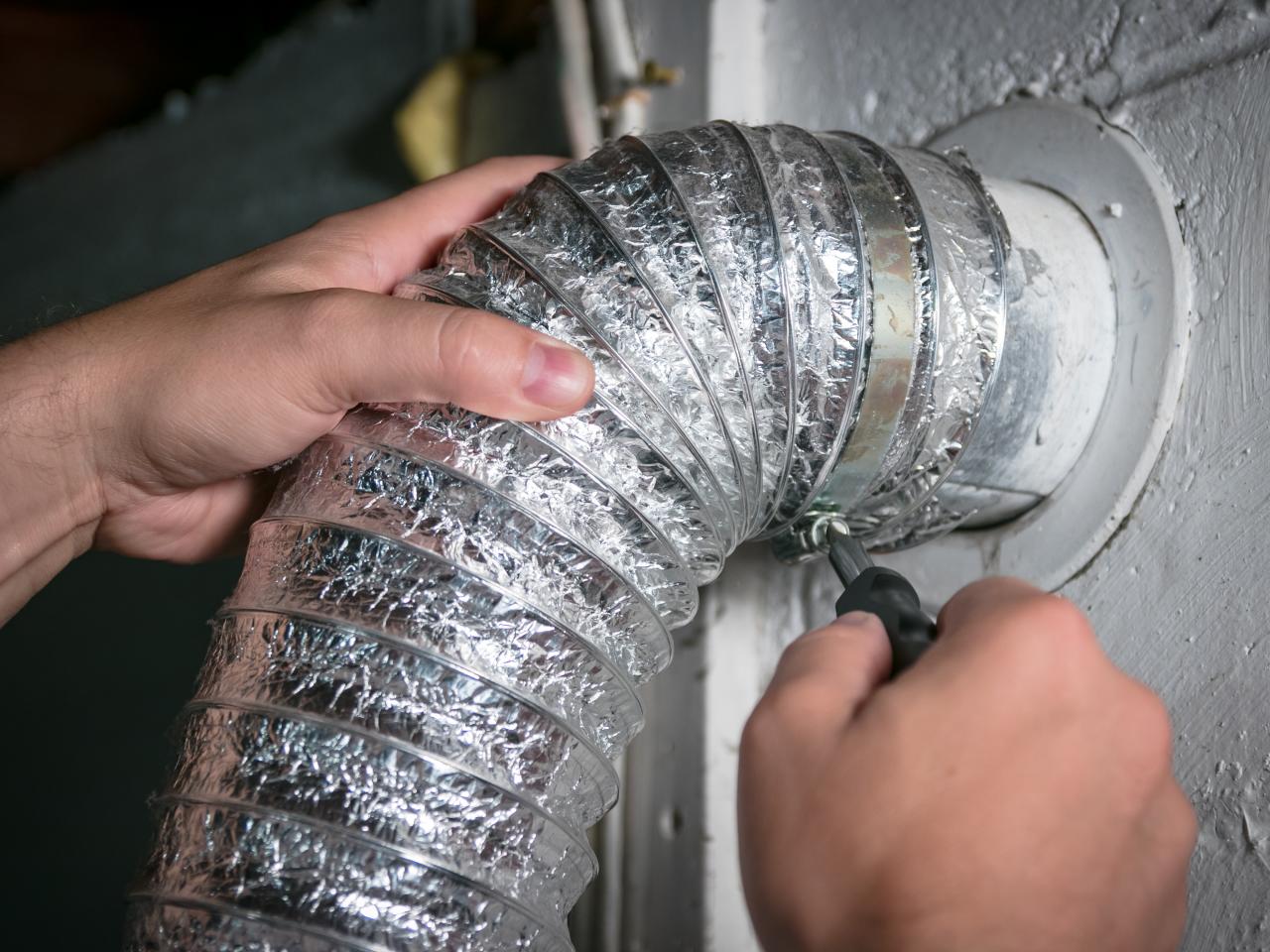Home>Home and Garden>10 Foolproof Methods To Remove A Rounded Bolt Head


Home and Garden
10 Foolproof Methods To Remove A Rounded Bolt Head
Published: February 18, 2024
Discover 10 foolproof methods for removing a rounded bolt head in this comprehensive guide for home and garden enthusiasts. Say goodbye to frustration with these effective techniques!
(Many of the links in this article redirect to a specific reviewed product. Your purchase of these products through affiliate links helps to generate commission for Noodls.com, at no extra cost. Learn more)
Table of Contents
- Introduction
- Method 1: Use a Hammer and Chisel
- Method 2: Weld a Nut onto the Bolt Head
- Method 3: Use a Bolt Extractor Kit
- Method 4: Drill a Hole into the Bolt Head
- Method 5: Use a Screw Extractor
- Method 6: Apply Heat to Loosen the Bolt
- Method 7: Use a Pipe Wrench or Vice Grips
- Method 8: Use a Left-Handed Drill Bit
- Method 9: Use a Rotary Tool with a Cutting Wheel
- Method 10: Seek Professional Help
Introduction
Encountering a rounded bolt head can be a frustrating and daunting experience, especially when you're in the midst of a DIY project or repair job. Whether it's due to wear and tear, improper tools, or excessive force, a rounded bolt head can bring your efforts to a screeching halt. However, fear not, as there are several foolproof methods to tackle this common issue and get that stubborn bolt out.
In this comprehensive guide, we will explore ten effective methods to remove a rounded bolt head, ranging from traditional techniques to innovative solutions. Each method is tailored to address different scenarios, ensuring that you have a diverse arsenal of strategies at your disposal. By understanding and implementing these methods, you can overcome the challenge of a rounded bolt head with confidence and precision.
From utilizing basic tools like a hammer and chisel to employing advanced techniques such as welding a nut onto the bolt head, this guide covers a spectrum of approaches to cater to various skill levels and resources. Whether you're a seasoned DIY enthusiast or a novice tinkerer, there's a method suited to your expertise and available tools.
As we delve into each method, it's important to approach the task with patience and a methodical mindset. While the prospect of dealing with a rounded bolt head may seem daunting, it's essential to remain calm and focused. By following the step-by-step instructions and leveraging the right tools, you can effectively tackle this challenge and regain momentum in your project.
So, without further ado, let's embark on this journey to conquer the rounded bolt head dilemma. By the end of this guide, you'll be equipped with the knowledge and techniques to confidently address this common issue, empowering you to tackle future projects with resilience and expertise.
Read more: Genius Hacks To Remove A Rounded Bolt Head!
Method 1: Use a Hammer and Chisel
When faced with a rounded bolt head, the traditional method of using a hammer and chisel can often yield effective results. This approach leverages the mechanical advantage of the chisel's sharp edge and the striking force of the hammer to create a controlled break in the bolt head, allowing for its removal.
To begin, select a chisel that matches the width of the bolt head and ensure that it is sharp and free of any damage. Position the chisel at a slight angle against the edge of the rounded bolt head, aiming to create a small indentation. With a firm grip on the chisel, carefully strike it with a hammer, directing the force towards the bolt head. The goal is to create a notch or groove in the bolt head, providing a new surface for gripping and turning.
It's crucial to exercise patience and precision during this process, as excessive force or hasty strikes can lead to further damage to the bolt or surrounding components. By gradually chiseling away at the bolt head, you can create a series of grooves that facilitate the application of torque for removal.
Once the chiseling process is complete, it's advisable to use a suitable wrench or pliers to grip the newly formed edges of the bolt head. With a steady grip, apply gradual and controlled force in the direction of bolt removal. The combination of the chiseled grooves and applied torque can often loosen the bolt, allowing for its extraction from the threaded hole.
While using a hammer and chisel may seem straightforward, it requires a steady hand and careful attention to detail. By approaching this method with patience and precision, you can effectively address a rounded bolt head and restore the integrity of the fastener.
In situations where the bolt head is severely rounded or the surrounding components limit access, alternative methods may be necessary. However, for moderately rounded bolt heads and accessible locations, the hammer and chisel method remains a reliable and accessible approach to tackle this common challenge.
Method 2: Weld a Nut onto the Bolt Head
When conventional methods fall short in removing a rounded bolt head, welding a nut onto the bolt head presents a robust and innovative solution. This method capitalizes on the fusion of the nut to the rounded bolt head through welding, creating a new gripping surface and enabling the application of torque for extraction.
To initiate this process, begin by selecting a nut that matches the size and threading of the bolt. The nut should have a sufficient surface area to ensure a secure weld and facilitate subsequent turning. With the nut in hand, position it over the rounded bolt head, ensuring a snug fit and proper alignment.
Next, prepare the surface of the rounded bolt head and the interior of the nut for welding. This involves cleaning the contact areas to remove any debris, rust, or contaminants that may hinder the welding process. Additionally, ensuring a clean and flush contact between the nut and the bolt head is essential for a strong and reliable weld.
Once the preparation is complete, proceed to weld the nut onto the rounded bolt head. This requires the use of a welding machine or welder, along with appropriate safety gear and precautions. By carefully applying welding heat and material, the nut becomes fused to the bolt head, creating a durable and integrated connection.
After the welding process, allow sufficient time for the welded nut and bolt head assembly to cool and solidify. Once the fusion is complete, the nut effectively becomes an extension of the bolt head, providing a robust and accessible surface for gripping and turning.
With the welded nut securely in place, utilize a suitable wrench or socket to apply torque in the direction of bolt removal. The welded nut serves as a reliable point of contact, allowing for controlled and forceful turning to loosen the bolt from its threaded position.
The method of welding a nut onto a rounded bolt head exemplifies a creative and effective approach to addressing this common challenge. By leveraging the principles of fusion and mechanical advantage, this method empowers individuals to overcome the limitations posed by a rounded bolt head and proceed with their repair or construction endeavors.
In scenarios where traditional methods prove ineffective or impractical, the technique of welding a nut onto the bolt head stands as a testament to ingenuity and resourcefulness, offering a viable solution to an otherwise daunting predicament.
Method 3: Use a Bolt Extractor Kit
Utilizing a bolt extractor kit is a highly effective and specialized approach to tackle a rounded bolt head with precision and efficiency. This method leverages the unique design and functionality of bolt extractors, also known as screw extractors, to grip and remove stubborn bolts that have become rounded or stripped.
The bolt extractor kit typically consists of multiple components, including extractors of various sizes, a tap handle, and a drill bit. The extractors are engineered with reverse spiral flutes and tapered ends, allowing them to bite into the bolt head and create a firm grip when rotated counterclockwise. This design enables the extractors to engage with the bolt head securely, even in cases where traditional tools struggle to gain traction.
To initiate the extraction process, begin by selecting an appropriately sized extractor from the kit that matches the dimensions of the rounded bolt head. With the extractor secured in a tap handle or wrench, carefully position it over the bolt head and apply downward pressure while turning it counterclockwise. The reverse spiral flutes of the extractor embed themselves into the bolt head, creating a strong grip that facilitates its removal.
In situations where the rounded bolt head presents significant resistance, it may be necessary to drill a pilot hole into the center of the bolt using the provided drill bit from the kit. This pilot hole serves as a guide for the extractor and aids in centering its engagement with the bolt head, enhancing the overall effectiveness of the extraction process.
As the extractor bites into the bolt head and gains traction, continue to apply consistent and controlled force in the counterclockwise direction. The combination of the extractor's gripping action and applied torque gradually loosens the bolt, allowing for its extraction from the threaded hole.
The use of a bolt extractor kit represents a specialized and reliable method for addressing rounded bolt heads, particularly in scenarios where conventional tools may prove ineffective. By harnessing the unique design and functionality of bolt extractors, individuals can confidently approach the task of removing rounded bolts with precision and efficacy.
In instances where other methods fall short or the rounded bolt head presents significant challenges, the bolt extractor kit stands as a valuable resource, offering a systematic and targeted approach to overcoming this common obstacle.
Method 4: Drill a Hole into the Bolt Head
Drilling a hole into the bolt head is a strategic and precise method employed to address a rounded or stripped bolt head that resists conventional removal techniques. This approach involves the careful use of a drill to create a small cavity in the center of the bolt head, allowing for the application of specialized extraction tools or the introduction of alternative removal methods.
To initiate the process, select a drill bit with a diameter slightly smaller than the width of the rounded bolt head. It is crucial to choose the appropriate drill bit size to ensure precise drilling and minimize the risk of damaging the surrounding components. Additionally, securing the workpiece in a stable position and using clamps or vices can enhance drilling accuracy and safety.
With the drill bit secured in the chuck of the drill, carefully position it at the center of the rounded bolt head. Apply gentle and consistent pressure as the drill bit penetrates the surface of the bolt head, creating a small cavity. It is essential to maintain a steady hand and avoid excessive force to prevent the drill bit from slipping or causing unintended damage to the surrounding area.
As the drill bit progresses into the bolt head, periodically withdraw it to clear any metal shavings and assess the depth of the cavity. This iterative process ensures that the drilled hole remains centered and facilitates subsequent extraction or modification of the bolt head. Depending on the material and hardness of the bolt, the drilling process may require patience and precision to achieve the desired depth.
Once the hole is successfully drilled into the bolt head, it serves as a pivotal point for implementing specialized extraction tools such as an easy out or screw extractor. These tools are designed to engage with the drilled hole and apply torque in the counterclockwise direction, effectively loosening the bolt from its threaded position. Alternatively, the drilled hole can accommodate the insertion of a bolt extractor or similar gripping device, providing a secure point of contact for removal.
The method of drilling a hole into the bolt head exemplifies a strategic and adaptable approach to addressing rounded or stripped bolts, offering a pathway to overcome the challenges posed by these stubborn fasteners. By leveraging the precision of drilling and the subsequent utilization of specialized extraction tools, individuals can navigate the complexities of rounded bolt heads with confidence and precision.
In scenarios where traditional removal methods encounter limitations, the method of drilling a hole into the bolt head stands as a versatile and effective strategy, providing a pathway to success in the face of this common obstacle.
Read more: How To Remove A Broken Bolt
Method 5: Use a Screw Extractor
When confronted with a rounded or stripped bolt head, the utilization of a screw extractor emerges as a specialized and reliable method to overcome this common challenge. Also known as an easy out, a screw extractor is designed to engage with the interior of the bolt head, creating a secure grip that enables its removal from the threaded hole.
The process begins by selecting a suitable screw extractor from a set that matches the dimensions of the rounded bolt head. Screw extractors are engineered with a tapered, spiral design that allows them to bite into the interior of the bolt head when rotated counterclockwise. This unique design empowers the extractor to create a firm and secure grip within the bolt head, even in cases where traditional tools struggle to gain traction.
To initiate the extraction process, carefully position the selected screw extractor at the center of the rounded bolt head. Apply downward pressure while turning the extractor counterclockwise, allowing its tapered end to embed itself into the interior of the bolt head. It is essential to exercise patience and precision during this process, ensuring that the extractor gains a secure grip without causing further damage to the bolt or surrounding components.
In situations where the rounded bolt head presents significant resistance, it may be necessary to create a pilot hole using a drill bit to guide the screw extractor's engagement. This pilot hole serves as a pivotal point for the extractor, enhancing its ability to bite into the interior of the bolt head and facilitate its removal.
As the screw extractor gains traction within the bolt head, continue to apply consistent and controlled force in the counterclockwise direction. The combination of the extractor's gripping action and applied torque gradually loosens the bolt, allowing for its extraction from the threaded hole. It is crucial to maintain a steady and deliberate approach, ensuring that the extractor remains engaged and aligned within the bolt head throughout the removal process.
The utilization of a screw extractor represents a targeted and effective method for addressing rounded or stripped bolt heads, offering a systematic approach to overcoming this common obstacle. By harnessing the unique design and functionality of screw extractors, individuals can confidently navigate the complexities of rounded bolt heads with precision and efficacy.
In instances where traditional removal methods encounter limitations, the method of using a screw extractor stands as a valuable resource, providing a reliable pathway to success in the face of this common challenge.
Method 6: Apply Heat to Loosen the Bolt
Applying heat to a rounded bolt head is a strategic and time-tested method that capitalizes on the principle of thermal expansion to facilitate the loosening and removal of stubborn fasteners. This approach is particularly effective when dealing with bolts that have become seized due to corrosion, rust, or thread locking compounds, presenting a formidable challenge for conventional removal techniques.
To initiate the process, it is essential to select a suitable heat source, such as a propane torch or oxy-acetylene torch, capable of delivering focused and controlled heat to the rounded bolt head. Prior to applying heat, it is advisable to protect surrounding components and surfaces from potential damage or discoloration by using heat-resistant materials or heat shields.
With the heat source in hand, carefully direct the flame towards the rounded bolt head, ensuring even coverage and consistent application of heat. The goal is to raise the temperature of the bolt and surrounding area, inducing thermal expansion that can break the bond between the bolt and the threaded hole. It is crucial to exercise caution and avoid overheating the bolt, as excessive heat can lead to deformation or damage to the surrounding components.
As the bolt absorbs the heat, the expansion of its metal structure creates micro-level movements that help to break the bond with the threaded hole. This process gradually loosens the bolt, making it more receptive to subsequent removal efforts. It is important to allow sufficient time for the heat to penetrate and influence the bolt, ensuring that the thermal expansion has a meaningful impact on its overall condition.
Following the application of heat, it is advisable to utilize appropriate tools such as a wrench, socket, or vice grips to attempt the removal of the loosened bolt. The combination of thermal expansion and applied torque can often facilitate the extraction of the bolt from its threaded position, overcoming the resistance posed by corrosion or thread locking compounds.
The method of applying heat to loosen a bolt exemplifies a strategic and versatile approach to addressing rounded or seized fasteners, offering a pathway to success in the face of challenging removal scenarios. By harnessing the principles of thermal expansion, individuals can navigate the complexities of rounded bolt heads with precision and efficacy, restoring the integrity of the fastener and the surrounding components.
In situations where traditional removal methods encounter limitations, the method of applying heat stands as a valuable resource, providing a systematic and effective approach to overcoming the challenges posed by seized or stubborn bolts.
Method 7: Use a Pipe Wrench or Vice Grips
When faced with a rounded bolt head, the utilization of a pipe wrench or vice grips presents a straightforward yet effective method to address this common challenge. These tools leverage mechanical advantage and gripping capabilities to apply torque and facilitate the removal of stubborn bolts that have become rounded or stripped.
To initiate this process, it is essential to select a pipe wrench or vice grips that match the size and dimensions of the rounded bolt head. Ensuring a secure and snug fit between the tool and the bolt head is crucial for effective engagement and torque application. Additionally, inspecting the condition of the pipe wrench or vice grips to ensure proper functionality and grip is essential for successful bolt removal.
With the selected tool in hand, carefully position it over the rounded bolt head, ensuring a firm and secure grip. The serrated jaws of the pipe wrench or vice grips provide ample surface area to engage with the bolt head, allowing for the application of controlled force in the direction of bolt removal. It is important to maintain a steady and deliberate approach, ensuring that the tool remains securely engaged with the bolt head throughout the removal process.
Once the pipe wrench or vice grips are securely in place, apply gradual and consistent force in the counterclockwise direction to loosen the bolt from its threaded position. The mechanical advantage provided by these tools, coupled with the gripping action, enables individuals to effectively overcome the resistance posed by rounded bolt heads and proceed with the extraction process.
In situations where the rounded bolt head presents significant resistance, it may be necessary to augment the gripping action with additional methods such as applying penetrating oil or heat to facilitate loosening. By combining the use of a pipe wrench or vice grips with complementary techniques, individuals can enhance the overall effectiveness of the removal process and address challenging bolt extraction scenarios.
The method of using a pipe wrench or vice grips exemplifies a practical and accessible approach to addressing rounded or stripped bolt heads, offering a reliable pathway to success in the face of this common obstacle. By leveraging the mechanical advantage and gripping capabilities of these tools, individuals can confidently navigate the complexities of rounded bolt heads with precision and efficacy, restoring the integrity of the fastener and the surrounding components.
Method 8: Use a Left-Handed Drill Bit
When conventional methods fail to address a rounded bolt head, the implementation of a left-handed drill bit emerges as a strategic and innovative approach to overcome this common challenge. This method capitalizes on the unique design and functionality of left-handed drill bits, offering a systematic and effective pathway to tackle stubborn bolts that have become rounded or stripped.
The distinguishing feature of a left-handed drill bit lies in its spiral flute orientation, which rotates counterclockwise, opposite to the standard right-handed drill bits. This reverse rotation direction is pivotal in the context of rounded bolt heads, as it introduces a dynamic and complementary force that can aid in the loosening and extraction of the fastener.
To initiate the process, select a left-handed drill bit that matches the size and dimensions of the rounded bolt head. It is crucial to ensure a precise fit between the drill bit and the bolt head, minimizing the risk of slippage or unintended damage. Additionally, securing the workpiece in a stable position and using clamps or vices can enhance drilling accuracy and safety.
With the left-handed drill bit secured in the chuck of the drill, carefully position it at the center of the rounded bolt head. Apply gentle and consistent pressure as the drill bit penetrates the surface of the bolt head, creating a small cavity. It is essential to maintain a steady hand and avoid excessive force to prevent the drill bit from slipping or causing unintended damage to the surrounding area.
As the left-handed drill bit progresses into the bolt head, the counterclockwise rotation introduces a dynamic force that can aid in the loosening of the fastener. This reverse drilling action can create micro-level movements within the bolt head, potentially breaking the bond between the bolt and the threaded hole. The introduction of this complementary force enhances the overall effectiveness of the extraction process, offering a strategic advantage in addressing rounded bolt heads.
Once the hole is successfully drilled into the bolt head, it serves as a pivotal point for implementing specialized extraction tools or alternative removal methods. The cavity created by the left-handed drill bit can accommodate the insertion of a bolt extractor or similar gripping device, providing a secure point of contact for removal. Additionally, the reverse drilling action may have induced sufficient loosening of the bolt, making it more receptive to subsequent extraction efforts.
The method of using a left-handed drill bit exemplifies a strategic and adaptable approach to addressing rounded or stripped bolts, offering a pathway to success in the face of challenging removal scenarios. By harnessing the unique design and functionality of left-handed drill bits, individuals can confidently navigate the complexities of rounded bolt heads with precision and efficacy, restoring the integrity of the fastener and the surrounding components.
Method 9: Use a Rotary Tool with a Cutting Wheel
When confronted with a rounded bolt head that defies conventional removal methods, employing a rotary tool with a cutting wheel presents a strategic and versatile approach to overcome this common challenge. This method leverages the precision and cutting capabilities of a rotary tool to create targeted modifications to the rounded bolt head, enabling its extraction with controlled and deliberate techniques.
To initiate this process, it is essential to select a high-quality rotary tool equipped with a cutting wheel that matches the size and dimensions of the rounded bolt head. The cutting wheel should be sharp and in optimal condition to ensure precise and effective modifications to the fastener. Additionally, securing the workpiece in a stable position and using clamps or vices can enhance the accuracy and safety of the cutting process.
With the rotary tool and cutting wheel in hand, carefully position the cutting wheel at the edge of the rounded bolt head, ensuring a clear and unobstructed view of the targeted area. Activate the rotary tool and guide the cutting wheel along the surface of the bolt head, creating strategic notches or grooves that facilitate subsequent gripping and turning. It is crucial to exercise patience and precision during this process, ensuring that the modifications are made with care and attention to detail.
As the cutting wheel progresses along the bolt head, it creates deliberate incisions that serve as new points of contact for gripping and turning. These targeted modifications enhance the accessibility and traction of the rounded bolt head, enabling the application of torque for its removal. The precision and control offered by the rotary tool with a cutting wheel empower individuals to address the challenges posed by rounded bolt heads with confidence and efficacy.
Once the modifications are complete, utilize a suitable wrench, pliers, or vice grips to grip the newly formed edges of the bolt head. With a steady grip, apply gradual and controlled force in the direction of bolt removal. The combination of the modified surfaces and applied torque can often loosen the bolt, allowing for its extraction from the threaded hole. This method exemplifies a strategic and adaptable approach to addressing rounded bolt heads, offering a pathway to success in the face of challenging removal scenarios.
In scenarios where traditional removal methods encounter limitations, the method of using a rotary tool with a cutting wheel stands as a valuable resource, providing a systematic and effective approach to overcoming the challenges posed by rounded or stripped bolts. By leveraging the precision and cutting capabilities of a rotary tool, individuals can confidently navigate the complexities of rounded bolt heads with precision and efficacy, restoring the integrity of the fastener and the surrounding components.
Method 10: Seek Professional Help
When all conventional methods and DIY approaches have been exhausted, and the rounded bolt head continues to resist removal, seeking professional assistance becomes a prudent and viable option. Professional technicians, mechanics, or specialized service providers possess the expertise, experience, and specialized tools necessary to address complex and challenging bolt extraction scenarios.
Professional help offers a range of advantages, including access to advanced equipment and machinery specifically designed for the extraction of stubborn fasteners. These professionals are equipped with a diverse array of specialized tools, such as hydraulic bolt extractors, pneumatic impact wrenches, and precision machining equipment, capable of addressing even the most challenging rounded bolt heads.
Moreover, professional technicians bring a wealth of experience and technical knowledge to the table, allowing them to assess the unique characteristics of the rounded bolt head and devise tailored strategies for its removal. Their familiarity with diverse fastener types, materials, and environmental conditions enables them to navigate complex extraction scenarios with precision and efficiency.
In addition to technical expertise, professional service providers adhere to stringent safety protocols and best practices, ensuring that the extraction process is conducted with the utmost care and attention to detail. This commitment to safety not only protects the integrity of the surrounding components but also minimizes the risk of damage or injury during the extraction procedure.
Furthermore, seeking professional help offers peace of mind and reassurance, knowing that the challenging task of removing a rounded bolt head is in the hands of skilled and experienced professionals. Their ability to troubleshoot, adapt to unforeseen challenges, and implement advanced extraction techniques instills confidence in the successful resolution of the issue.
Ultimately, the decision to seek professional help for the removal of a rounded bolt head represents a strategic and pragmatic approach, acknowledging the complexities and nuances of the extraction process. By leveraging the expertise, resources, and specialized tools of professional technicians, individuals can overcome the most formidable bolt extraction challenges and ensure the successful resolution of the issue.













